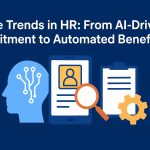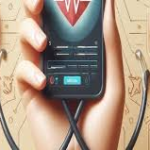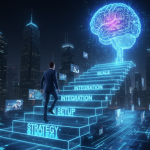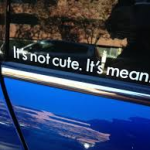The rise of AI advertising tools has completely transformed how brands approach marketing. What used to take weeks of brainstorming, design, and revisions can now be done in hours, sometimes even minutes.
But successful implementation isn’t just about signing up for an AI tool and hitting “generate.” To truly get value from an AI ad generator, you need a process that blends technology with smart strategy.
Here’s a practical, step-by-step guide to help you integrate AI into your ad creation workflow, and actually see results.
Step 1: Define Your Marketing Objectives
Before diving into any new technology, start with clarity.
Ask yourself what you really want to achieve:
- Are you trying to speed up ad creation?
- Improve campaign performance?
- Reduce creative costs?
- Test more variations faster?
Your goals will determine the kind of AI ad generator that’s right for you. For example, if your focus is visual storytelling, you’ll need strong video and image generation capabilities. If your goal is data-driven optimization, look for tools with built-in analytics and A/B testing.
Knowing what success looks like will help you pick a tool that aligns with your marketing priorities, not just one that looks impressive in a demo.
Step 2: Choose the Right Tool
Not all AI ad creation platforms are built the same. The right tool should balance creative flexibility with automation, allowing you to generate unique, on-brand content at scale.
Top-performing platforms like QuickAds, AdCreative.ai, and Predis.ai stand out for their ability to generate both video and image ads, optimize for multiple platforms, and maintain brand consistency.
When choosing, look for these must-have features:
- Video and image generation capabilities
- Platform-specific optimization (Meta, Google, TikTok, YouTube, etc.)
- Custom brand library to store your tone, fonts, and logos
- A/B testing integration for performance-based refinement
The best AI tools act as creative partners, not just generators. They help you create campaigns that perform as well as they look.
Step 3: Prepare Your Brand Assets
Even the smartest AI ad generator needs context to create meaningful ads. Before generating anything, upload your essential brand assets, including:
- Logos and fonts
- Brand color codes and style guides
- Product photos and links to your website or social pages
- Tone of voice examples from past campaigns
These inputs guide the AI to produce content that feels authentically yours. Think of it as teaching your AI who you are before asking it to speak on your behalf.
The more context you provide, the better the output will be from day one.
Step 4: Start Small With Pilot Campaigns
It’s tempting to go all in right away, but the smart move is to start small.
Pick one campaign, maybe an upcoming product launch or a seasonal promotion, and let the AI advertising tool create multiple ad variants. Experiment with different tones, visuals, and copy lengths.
Then compare those AI-generated ads against your existing creatives. Measure differences in engagement, click-through rates, and conversions.
This pilot phase helps you understand how AI fits into your process without disrupting your current workflow.
Step 5: Integrate With Ad Platforms
Once your pilot ads are ready, connect your AI ad generator directly with your ad management platforms like Meta Ads Manager, Google Ads, or TikTok Business Center.
This integration saves time and removes the need for manual uploads. It also allows the AI to track ad performance in real-time, learning which versions resonate most with your audience.
By syncing data between your tools, you create a feedback loop where insights continuously improve your creative output.
Step 6: Monitor Results and Metrics
AI makes it easier to measure what works, but you still need to look at the data.
Keep track of key performance indicators such as click-through rate (CTR), engagement rate, and return on ad spend (ROAS). Most AI advertising tools display these metrics in intuitive dashboards, so you can see trends at a glance.
Compare results between video vs. image creatives, short copy vs. long, and emotional vs. rational messaging. These insights help you refine your prompts and creative strategy for future campaigns.
The more data you analyze, the more precise your next set of ads will be.
Step 7: Train the AI
The real power of an AI ad generator comes from learning.
Feed your winning campaigns back into the system. By doing this, you’re teaching the AI what “success” looks like for your brand.
Over time, it will begin to generate ads that align more closely with your best-performing styles and formats. Think of it as mentoring a junior creative, the more examples you give, the faster it learns.
AI thrives on iteration. The more campaigns you run, the smarter and more brand-aligned your output becomes.
Step 8: Build a Workflow
Automation doesn’t mean chaos. A structured workflow ensures your team stays aligned and creative quality remains consistent.
Define clear roles for everyone involved:
- Marketer: Drafts AI prompts and sets campaign goals
- Designer: Reviews visuals and adjusts creative elements
- Manager: Approves top-performing ads and tracks performance
By keeping humans in the loop, you balance efficiency with oversight. The goal isn’t to replace your creative process, it’s to make it faster, smarter, and more scalable.
Step 9: Expand Across Platforms
Once you’re confident in your process, scale your AI-generated ads across multiple platforms, Meta, YouTube, LinkedIn, Pinterest, and others.
Consistency across channels builds stronger brand recognition, while platform-specific optimization ensures each ad performs at its best.
An AI ad creation tool with cross-platform publishing capabilities can handle this automatically, helping you maintain both speed and precision.
The result? Broader reach, better engagement, and higher ROI, all without increasing workload.
Step 10: Refine, Don’t Replace
AI is not here to replace your creative team; it’s here to empower them.
The most successful marketers use AI as a co-creator. They combine data-driven insights from the AI ad generator with human storytelling and strategy to craft ads that connect emotionally while performing technically.
Encourage your team to experiment. Let AI handle repetitive tasks while people focus on creative direction, storytelling, and brand-building.
That’s how you get the best of both worlds, machine precision and human intuition.
Final Take
Implementing an AI ad generator isn’t about removing creativity; it’s about scaling it.
Start small, analyze what works, and let performance data guide your next move. Over time, you’ll build an AI-driven creative engine that produces high-quality, on-brand ads faster than ever before.
The brands that win in this new era of AI in marketing aren’t the ones with the biggest budgets, they’re the ones that use technology intelligently, with strategy and heart leading the way.










